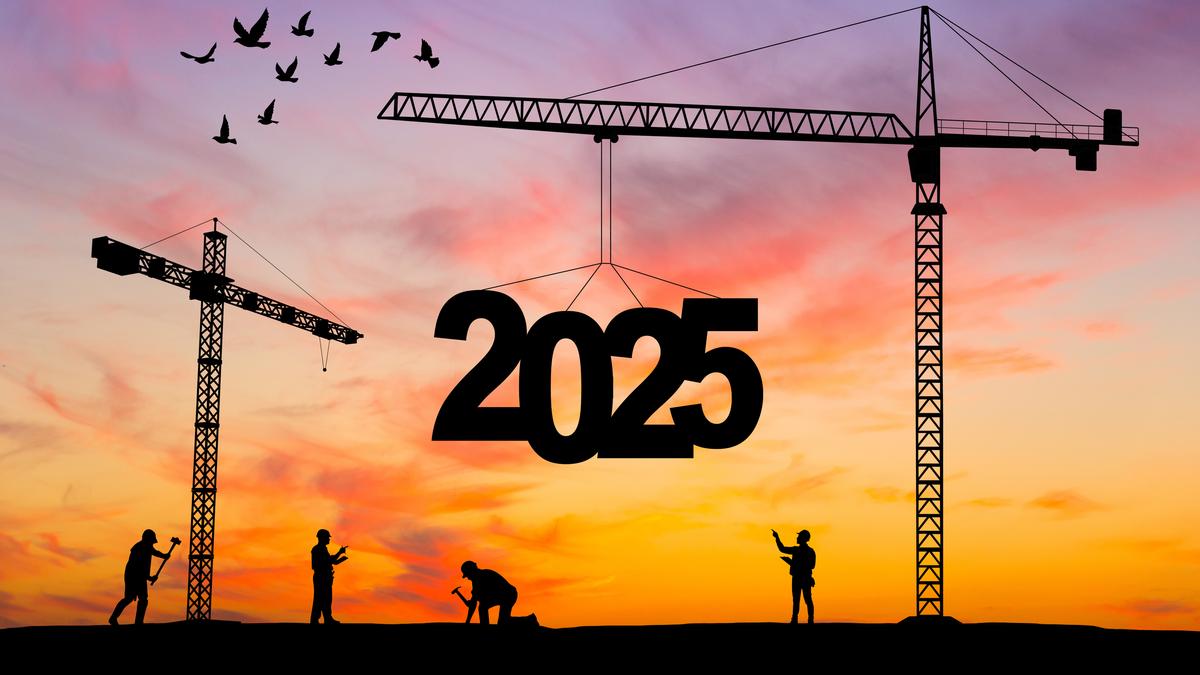India’s real estate market is entering a vital phase, with 2025 set to redefine its growth path. Contributing around 7% to the nation’s gross domestic product (GDP) in 2024, the sector is poised to grow to 13% in 2025 and 18% by 2047, aligning with India’s projected $26 trillion GDP by its centenary of independence. The market size is expected to expand from $300 billion in 2024 to $1 trillion by 2030, ultimately reaching $4.8 trillion by 2047 (CREDAI-EY).
This growth is driven by urbanisation, infrastructure development, and evolving consumer preferences. Despite challenges such as rising construction costs and affordability gaps, policy reforms and increased institutional investments are creating a supportive ecosystem. Real estate in India is no longer confined to traditional asset classes; emerging segments such as data centres, co-living, and senior housing are reshaping the landscape. How will these trends reshape the real estate outlook in 2025?
1. Changing housing dynamics
Urbanisation is reshaping real estate demand in India at an unprecedented pace. By 2025, the urban population will surpass 500 million, accounting for over 37% of the total population (CREDAI-Colliers). This growth is concentrated in Tier II and III cities, where government initiatives like the Smart Cities Mission are driving infrastructure development and making these regions hubs of economic activity.
Residential real estate remains the largest contributor, expected to account for 75% of the sector’s market size until 2032. Post-2032, segments such as industrial, commercial, and retail are projected to witness higher growth rates, with the residential share declining to 58% by 2047 (CREDAI-EY).
The demand for affordable housing continues to grow. Affordability remains a challenge in metros, where rising land and construction costs are pricing many buyers out of the market.
The rental market, particularly co-living spaces, is witnessing a surge, fuelled by millennials and urban migrants seeking flexible housing options. Developers are now integrating rental housing models into their portfolios, offering community-centric and cost-efficient solutions. This shift reflects a broader trend where consumer preferences are redefining the residential real estate landscape.
2. Technology transforming real estate practices
Technological integration is driving a revolution across the real estate sector, reshaping how properties are designed, managed, and sold. By 2025, the PropTech market is projected to reach $20 billion, up from $10.5 billion in 2024, driven by AI, IoT, and blockchain adoption (CREDAI-EY). These technologies are enhancing operational efficiencies, streamlining property transactions, and improving consumer experiences.
Building Information Modelling (BIM) and digital twins are becoming essential in construction, enabling developers to simulate and optimise building designs. IoT-enabled smart homes are increasingly in demand, offering residents the ability to control energy usage and improve efficiency. Such homes align with India’s sustainability goals, making them a key growth driver for the sector.
Blockchain technology is revolutionising property transactions, reducing fraud, and ensuring transparency in land records. Virtual reality is enhancing customer engagement, allowing buyers to explore properties through immersive site visits without leaving their homes. As technology reshapes traditional processes, the industry is shifting from being merely a service provider to a tech-enabled growth engine, setting a transformative tone for the real estate outlook 2025.
3. Sustainability at the core of development
Sustainability is no longer optional; it is an imperative shaping the future of Indian real estate. Buildings currently account for nearly one-third of global energy consumption, and India is aligning its real estate practices with global sustainability goals. By 2025, green-certified projects are expected to grow 25%, with net-zero energy buildings becoming a mainstream reality (Grant Thornton Bharat LLP).
India’s green real estate initiatives include renewable energy integration, water conservation technologies, and sustainable construction materials. Developers are increasingly focusing on eco-friendly practices such as smart irrigation systems, rainwater harvesting, and waste recycling in residential complexes. These initiatives not only align with environmental goals but also enhance the marketability of projects.
By 2047, net-zero carbon buildings are projected to account for 50% of the total stock, with green-certified residential developments growing to 30% from the current 15% (CREDAI-EY). Sustainability is also attracting institutional investors, who are prioritising ESG-compliant (environmental, social and governance) portfolios, reinforcing the importance of green growth.
4. Emerging niches
India’s real estate market is diversifying beyond traditional residential and commercial segments. The data centre market is projected to grow at a compound annual rate of 25% through 2025, driven by policies like Digital India and the demand for cloud computing infrastructure (CREDAI-Colliers). Chennai, Hyderabad, and Mumbai are emerging as key hubs, with developers collaborating with tech giants to meet this rising demand.
Co-living spaces are evolving into a mainstream asset class, fuelled by demand from millennials and professionals seeking affordable and flexible housing. This segment is expected to grow by 17% annually, reflecting changing lifestyles and increasing urbanisation.
Senior housing is another promising niche, driven by India’s ageing population. Developers are creating communities tailored to older residents, offering healthcare facilities and social engagement opportunities. These emerging markets not only cater to specific societal needs but also provide diversified investment opportunities.
5. Policy reforms for transparency
Policy reforms have been a catalyst for market transparency and sustained growth in the Indian real estate sector, fostering trust and attracting both domestic and global investors. The enactment of RERA (Real Estate Regulatory Authority) Act has been transformative, ensuring transparency, accountability, and timely delivery of projects. As of 2024, over 78,000 projects had been registered under RERA, with more than 88,000 consumer complaints resolved, showcasing its role in protecting homebuyers’ interests (CREDAI-EY Report).
The introduction of Real Estate Investment Trusts (REITs) has further democratised the market, enabling retail investors to participate in high-yield commercial assets. By 2025, REITs are expected to attract annual investments exceeding ₹8,000 crores, supported by regulatory enhancements that include retail and residential properties (Grant Thornton Bharat LLP).
The writer is Director Eros Group.
Published – January 04, 2025 03:41 pm IST
Related Topics
Source Homevior.in




